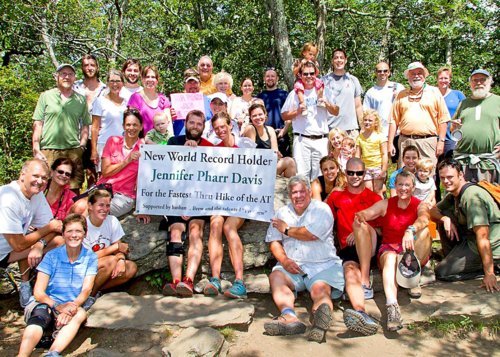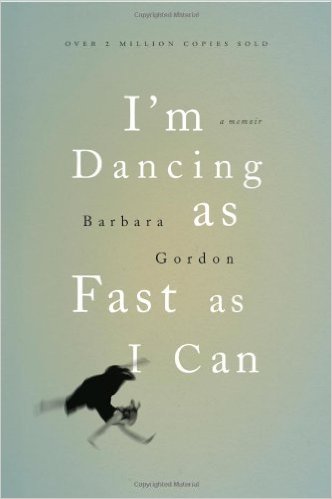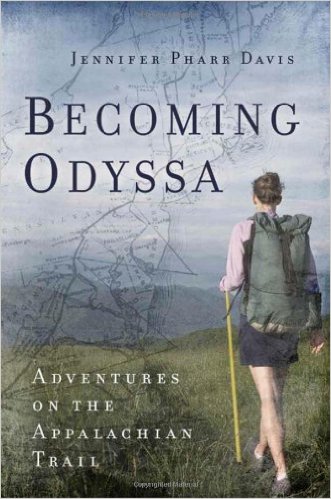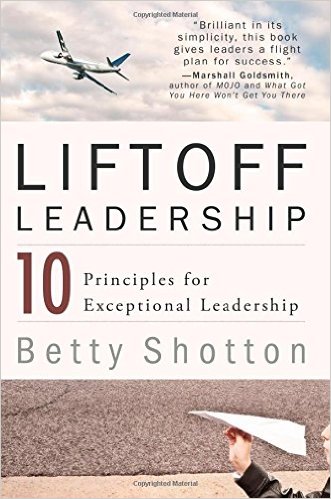Recap of Unforgettable Finish
The Last Day- 36.2 miles
Start time: 2:45am
End time: 3:26pm

Jen, Carl, Maureen, and I woke up at 2:45 again. Jen was making some pretty terrible sounds as she got ready. Like, “I’ve been hiking 47 miles a day for 45 days straight and have gotten a total of 7.5 hours of sleep the last two nights” sort of sounds.
Carl said, “This is how it feels.” We talked later about that and what he meant- more or less- was, “This is how it feels when you’ve pushed yourself to the limit. And this is what you’ve got to overcome if you’re going to do something great.” I thought I knew what he meant when he said it. But I could tell Jen didn’t because she just groaned some more.
Anyway, they set off at 3:05. I was nervous again because you never know what can happen when someone’s night hiking on less than 4 hours of sleep. But Jen and Carl reached Neels Gap around 5:25.
Neither of them touched the hard boiled egg and mozzarella string cheese wraps I’d made them. I have to admit, I was a little insulted. I’ve been getting rave reviews for my wraps all trip- beginning with Dutch- and I’m not used to being rejected.
Carl chugged two Ensure shakes then they began climbing Blood Mountain a few minutes later. Maureen and I drove around to Woody Gap. When we got there at 6:05, Jen’s two brothers Jones and James were there. (Jones and his wife Jackie flew down from New York by way of Charlotte, where they have a place. James, Lindsay, and Hazel came straight from Litchfield Beach in South Carolina.)
I asked them if they knew Jen wouldn’t be there until 9 or so, and they said yes. James added, “This [waking up ridiculously early] is what I get for hanging out with my brother the banker.”
We talked until 7 or so then I told them I needed to take a nap. James took a nap, too. I think Jones stayed awake and talked to Maureen, but I’m not sure because I was passed out and drooling for the next hour and a half.
Jen came in at 9:05, but Carl was nowhere in sight. When she got to the car, she told us he had to stop early in the 10.6-mile stretch because he’d gotten sick. Carl had been having stomach issues for weeks. Plus, he’d just finished helping organize a road race that ran through TN from MO to GA.
Jen said she waited for him for a few minutes, then decided she couldn’t control when he got there but she could control when she got to us. I should mention that, like any good Sherpa, Carl was carrying the snacks and drinks.
So after Jen got down a Pepsi- along with one of my gourmet and under-appreciated egg wraps- she elaborated on what how she’d felt with no food or water for 10+ miles. At one point, she said half-jokingly, “I saw a lot of animals on that stretch- I just don’t know if they were all real.”
But she felt better after taking in some more snacks and juice water, and she and Jones were heading for Gooch Gap by 9:15. Maureen and I drove around while James waited for Carl to come out of the woods.
Apparently, Jones was really pushing Jen and saying things like, “Come on… you should be running right now! This is a runnable section.” So she ran for a while and they got in at 10:21. James and Carl were nowhere in sight so Jones hiked/ran the next section to Cooper Gap.
At some point along the way, I stopped to check the map and realized that James and Carl were behind Maureen’s enormous diesel-engine Ford truck. When we got to Cooper Gap, Carl told us how he’d stopped so Jen couldn’t hear him throw up because she said if she’d heard him, she’d have probably gotten sick, too. So he was sprawled out on all fours in the middle the trail, puking his guts out for five minutes.
Eventually, he got to his feet and started hiking again but as he ran down Blood Mountain to catch up with Jen, he jostled his stomach enough that he got sick again. Then he realized he wasn’t going to catch her, so he took a side trail down to Winfield Scott State Park where he hoped to hitch a ride to Woody Gap.
A guy in a truck took him a mile or two before he had to turn off, but no one else would pick him up so he had to road walk the remaining 7 miles. But he made it. And we were glad. The Pit Crew had gone 46 days without a lost-time injury. We didn’t want to ruin the streak so close to the end.
Jen and Jones reached Cooper Gap around 11:35, and James hiked with her from there.
Eventually, people realized that they couldn’t reach me on my phone because I’d thrown it in a Dairy Queen Blizzard so they started tracking me down on Jen’s phone. It turned out to be a good thing because I was able to give my parents directions to Hightower Gap and they were able to meet us there.
Jen and James came through around 12:45 and only stayed for a few minutes before pressing on toward Three Forks, which was 4 miles away. At this point, Jen could definitely smell the barn.
My sister Dearing and I drove around to Three Forks where Warren was waiting. He’d rearranged his schedule and driven hours out of his way so he could meet Jen at Three Forks and hand her a cup of water from the stream.
When Jen got to Three Forks, I cranked John Cowan’s version of “Mighty Clouds of Joy” from the Telluride Bluegrass Festival compilation. (She would ask me to sing that song whenever I walked with her on the flat stretches of trail.)
From Three Forks, Jen and James had 3.3 miles to Forest Service Road 42. They reached it around 3:05. Everyone was on top of Springer except Jen’s mom- who was waiting to take photos of Jen and James- and me. I played “The Cave” by Mumford and Sons. That’s been the unofficial theme song this summer because it talks about “strength through pain” and it makes lots of allusion to the Odyssey.
Jen started sobbing. I cried, too. We hugged, and I said, “You did it…” And she said, “No. We did it…” We held hands on our way up Springer. I asked if Jen would want to hug people or take photos or do anything else before finishing, and she said, “I just want to touch the rock.”
I asked her if she wanted to know who was here and she said “no.” Every now and then, she would take gasping breaths and start crying again, but then she’d regain her composure.
Jen’s family friend Serena, who’d fed Jen lasagna on a tablecloth in northeast TN, took some photos a hundred yards or so from the rock. When we got near the summit, we could hear all the people.
We came out of the woods onto the granite slab and everyone had their cameras out. There were 45 or so people there. They all started cheering and taking photos. Jen started crying again. We touched the sign together then we hugged and cried some more. It was kind of funny having so many people around. Everyone recognized how awkward it was and as the cameras flashed someone said something about a “private moment.” Everyone laughed.
Jen looked at her watch to mark the time. 3:26pm. 46 days, 11 hours, and 20 minutes after she touched the sign on Katahdin. Then we sat on the rock and took it all in.
Jen saw her Samford friend Emily who’d driven all the way from Mississippi with her husband Jeff. She didn’t know Emily was coming so she started crying all over again. And that happened several more times because people Jen cared about so much had driven so far.
Her Samford roommate Katie had driven from Birmingham with her husband David, son Peter, and mom Beth. Mark Catlin, another Samford friend, had driven 15 hours round trip from Raleigh with his wife and son to spend an hour on top of Springer. And loads of friends, family, and strangers from western NC, TN, GA, AL, and SC.
Warren stood off in the background taking it all in, wearing a green shirt with a white blaze on it, looking very much like a part of the AT. I hugged him and said “thank you.” We both started to cry and he said, “thank you… thank you…” He hugged me so tight I almost couldn’t breathe.
It was all very special and wonderful. Like a wedding.
After all the photos and hugs, Jen signed the register. It was short and sweet. She wrote, “Full of love, appreciation, memories, and no regrets! – Jennifer Pharr Davis “Odyssa” July 31, 2011.” Eventually people started straggling back down the mountain.
A few friends and family got lost along on the way to Springer, but we got to see them in the parking lot. Jen’s friend Alice who drove up from Atlanta, brought champagne and plastic cups. We cranked Mumford and Sons again. Jen and I danced to “The Cave.” After another 20 or 30 minutes, everyone said their goodbyes and we headed our separate ways.
As Jen and I were driving back down forest service road 42, we stopped to ask a group of soldiers who were doing military exercises which was the quickest way down to Dahlonega. They asked if we’d been to Springer to see the endurance hiker, and we told them Jen was the endurance hiker.
They called their sergeant over because he wanted to shake her hand and congratulate her. We thanked them for serving our country then drove toward Helen where we spent the night with our friends Frank and Lauren at Lauren’s parents’ mountain house (Thanks, Don and Genevieve!).
We visited with them for a while, ate some pizza then went to bed. And that was the end of our arduous, sublime adventure.
Psalm 91
1 Whoever dwells in the shelter of the Most High will rest in the shadow of the Almighty.
2 I will say of the LORD, “He is my refuge and my fortress, my God, in whom I trust.”
3 Surely he will save you from the fowler’s snare and from the deadly pestilence.
4 He will cover you with his feathers, and under his wings you will find refuge; his faithfulness will be your shield and rampart.
5 You will not fear the terror of night, nor the arrow that flies by day,
6 nor the pestilence that stalks in the darkness, nor the plague that destroys at midday.
7 A thousand may fall at your side, ten thousand at your right hand, but it will not come near you.
8 You will only observe with your eyes and see the punishment of the wicked.
9 If you say, “The LORD is my refuge,” and you make the Most High your dwelling,
10 no harm will overtake you, no disaster will come near your tent.
11 For he will command his angels concerning you to guard you in all your ways;
12 they will lift you up in their hands, so that you will not strike your foot against a stone.
13 You will tread on the lion and the cobra; you will trample the great lion and the serpent.
14 “Because he loves me,” says the LORD, “I will rescue him; I will protect him, for he acknowledges my name.
15 He will call on me, and I will answer him; I will be with him in trouble, I will deliver him and honor him.
16 With long life I will satisfy him and show him my salvation.”







 Jennifer Pharr Davis, who already holds the women’s speed-record for a thru-hike on the Appalachian Trail, hopes to surpass the men’s record this summer. Courtesy photo.
Jennifer Pharr Davis, who already holds the women’s speed-record for a thru-hike on the Appalachian Trail, hopes to surpass the men’s record this summer. Courtesy photo.




 Sasha Souza is the owner of Sasha Souza Events (www.sashasouzaevents.com). She and her wedding design work have appeared on “The Early Show” (CBS), “Primetime” (ABC), “Inside Edition” and the Style Network’s “Whose Wedding is it Anyway?” Her newest book, “Signature Sasha: Magnificent Weddings by Design” (Beaufort Books, 2010) is available at amazon.com.
Sasha Souza is the owner of Sasha Souza Events (www.sashasouzaevents.com). She and her wedding design work have appeared on “The Early Show” (CBS), “Primetime” (ABC), “Inside Edition” and the Style Network’s “Whose Wedding is it Anyway?” Her newest book, “Signature Sasha: Magnificent Weddings by Design” (Beaufort Books, 2010) is available at amazon.com. The Mom’s Choice Awards® Names Hide!!! Among Best In Family-Friendly Products (or Services)
The Mom’s Choice Awards® Names Hide!!! Among Best In Family-Friendly Products (or Services) Memoirs have been on my mind in recent weeks. It seems like more and more are appearing on the shelves, and anyone who has spent a year or two on the Earth feels their story is publishable. I don’t mean for this to be a criticism of the industry, however, especially since I consistently enjoy reading memoirs myself, but I believe that only the truly insightful or incredibly talented types with lives that are exceptional should be granted the pages to tell their story. (I also think people like Justin Bieber should wait a few years. How much can be said when you’re pre-pubescent? The ghost-writer had to get creative there.)
Memoirs have been on my mind in recent weeks. It seems like more and more are appearing on the shelves, and anyone who has spent a year or two on the Earth feels their story is publishable. I don’t mean for this to be a criticism of the industry, however, especially since I consistently enjoy reading memoirs myself, but I believe that only the truly insightful or incredibly talented types with lives that are exceptional should be granted the pages to tell their story. (I also think people like Justin Bieber should wait a few years. How much can be said when you’re pre-pubescent? The ghost-writer had to get creative there.)
 ho made a statement that this by no means indicates that she is close to retirement.
ho made a statement that this by no means indicates that she is close to retirement.